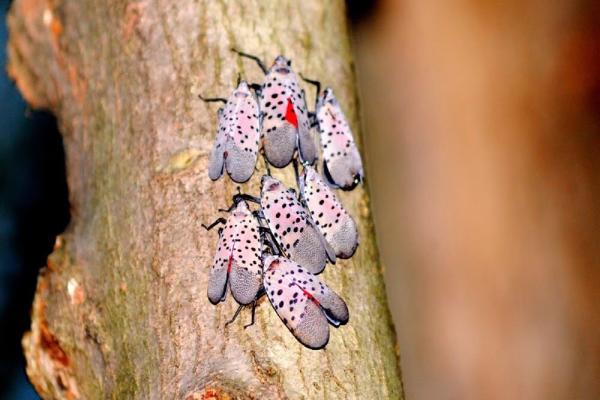
Mosquito Joe provides insights on managing Spotted lanternflies to prevent plant damage.
|
Have you ever seen an intriguing moth-like insect with gray and red leopard-spotted wings? You may have come across the spotted lanternfly. Sightings of these flashy critters have become increasingly common, and the U.S. government is urging people to watch for spotted lanternflies and report any sighting. Why is that? Do spotted lanternflies bite? Do they transmit disease? Are spotted lanternflies dangerous?
These are all great questions. Read on for the answers and to learn what spotted lanternflies do that makes the government so concerned. Then see what to do if you see a spotted lanternfly.
What Are Spotted Lanternflies and Where Did They Come From?
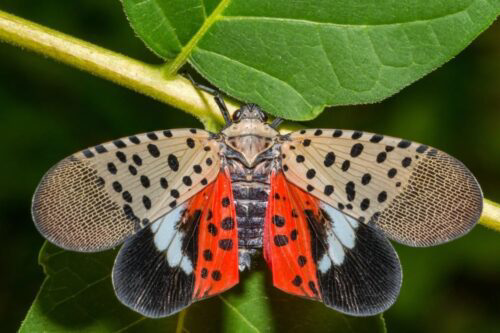
Spotted lanternflies (Lycorma delicatula) are an invasive species of insect originating in parts of Asia, including China, India, and Vietnam. They are commonly known as planthoppers. First detected in Pennsylvania in 2014, spotted lanternflies are now found throughout the Northeast and central-eastern United States. Spotted lanternflies do not bite, but they are very dangerous to our agriculture. The damage they cause exceeds hundreds of millions of dollars annually to about 70 species of woody plants and fruit crops, especially grapes.
Spotted lanternflies were introduced to America accidentally, likely arriving as egg masses on imported goods such as stone or timber. Thanks to their rapid reproduction, a lack of natural predators, and abundant food sources, these beautiful, destructive pests have become highly invasive.
The spotted lanternflies' voracious appetite is not the only concern with these creatures. Their feeding also stresses native trees, making them far more vulnerable to disease, fungus, and other pests. They disrupt local ecosystems and forest health while destroying crops. Initially detected in Pennsylvania, spotted lanternflies are rapidly spreading across multiple states, including Delaware, Maryland, Virginia, and Michigan. This expanding range increases the risk to additional agricultural areas and natural habitats.
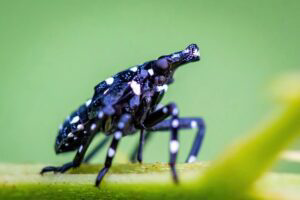
Do Spotted Lanternflies Bite or Harm Humans?
While spotted lanternflies do not bite humans, they certainly do plenty of harm. Spotted lanternflies can swarm in the hundreds or even thousands, especially in late summer and early fall when they mature. These huge groups gather on trees, walls, and outdoor structures. While spotted lanternflies cannot hurt you directly, these swarms are worse than a nuisance. Aside from the vast damage to our agriculture and food supply, these swarms coat decks, patios, and outdoor furniture, driving people indoors. They secrete a sticky honeydew that coats the surfaces they rest on, promoting the growth of black sooty mold and making walkways slippery and messy.
So, although spotted lanternflies do not bite, they do cause harm.
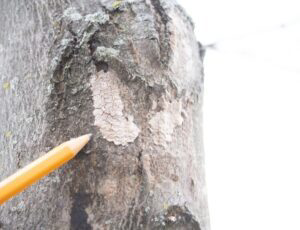
How Do They Affect Plants and the Environment?
Are spotted lanternflies dangerous? Let’s see: Spotted lanternflies are voracious feeders, devouring huge amounts of sap from over 70 plant species, including fruit trees, nut trees, hardwoods, and ornamental plants. Their favorite host is the Tree of Heaven, though they will also eat from grape vines and many other woody plants. They pierce the bark of trees and plants to access the sap. Then, the spotted lanternflies drain considerable amounts of sap, weakening the plant’s ability to photosynthesize, leaving it weakened and vulnerable to disease and other pests. The honeydew they secret coats the tree’s leaves and branches, attracting other pests and promoting sooty mold growth.
So, although we’ve established that spotted lanternflies do not bite people, it’s clear that their unchecked behavior is dangerous to us and the natural world.
Related Topic: What Is a Tree of Heaven
What to Do If You See a Spotted Lanternfly?
Understanding what spotted lanternflies do and the harm they cause, what should you do if you see a spotted lanternfly? Follow these steps:
- Report the Sighting: Many states have hotlines or online forms to report spotted lanternfly sightings. Just Google “report spotted lanternfly near me” to find the right place for your state. Snap a photo if possible, and include information about where you saw it.
- Squash the Bugs: If possible, kill any spotted lanternflies you see. But be sure you identify them correctly so you don’t damage any native species. Stomp them or capture and dispose of them to prevent additional damage to plant life.
- Check for Egg Masses: If you see a spotted lanternfly in fall or winter, look for egg masses on trees, outdoor furniture, fences, rocks, or even vehicles. Inspect the undersides of each object to locate hidden eggs. The egg masses look like smears of mud and can contain up to 50 eggs. Using a putty knife or a stiff brush, scrape the eggs into a plastic bag and destroy them with rubbing alcohol or hand sanitizer.
Related Topic: Spotted Lanternflies in Winter
Controlling Infestations
When you find a spotted lanternfly, there are likely many more nearby. To protect your trees from the damage that spotted lanternflies do, consider these effective and safe solutions:
- Use Specialized Traps: Spotted lanternflies walk or crawl up the bark of the tree they feed on. Add traps specifically designed to catch and kill the lanternflies without harming native insects or birds.
- Professional Pest Control: Spotted lanternflies are sneaky and fast as well as destructive. Call on the experts like Mosquito Joe for professional and effective spotted lanternfly control.
As we’ve seen, although spotted lanternflies do not bite, they can hurt you, your neighbors, U.S. agriculture, and the environment.
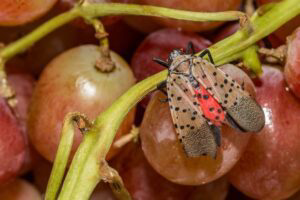
Long-Term Solutions for Managing Spotted Lanternflies
Managing spotted lanternflies and the damage they do to agriculture and the environment will require an all-hands-on-deck approach:
- Government initiatives, including quarantine zones, work to slow the spread of these voracious pests to new areas.
- Residents must remain alert to signs of these pests and report them promptly when there is a sighting.
- Volunteers work with agency leaders to find and remove egg masses from trees and other outdoor surfaces in high-infestation areas.
- Professional pest control companies provide highly targeted lanternfly control treatments to curtail these invasive pests without damaging native species.
Contact Mosquito Joe® for Spotted Lanternflies Control Services
While they don’t bite, spotted lanternflies are dangerous. Trust the pros at Mosquito Joe to provide effective spotted lanternfly control. As part of our comprehensive pest control services, we exterminate lanternflies for our residential and commercial customers.
Our service professionals are experienced in effectively removing all types of flying, biting, and annoying pests. And with work that is backed by the Neighborly Done Right Promise® and our own Mosquito Joe guarantee, you’re certain to be happy with the results.
Request a free quote today, and we’ll get rid of the lanternflies on your property.
This article is intended for general informational purposes only and may not be applicable to every situation. You are responsible for determining the proper course of action for your home and property. Mosquito Joe is not responsible for any damages that occur as a result of this blog content or your actions. For the most accurate guidance, contact your local Mosquito Joe location for a comprehensive, on-site assessment.
